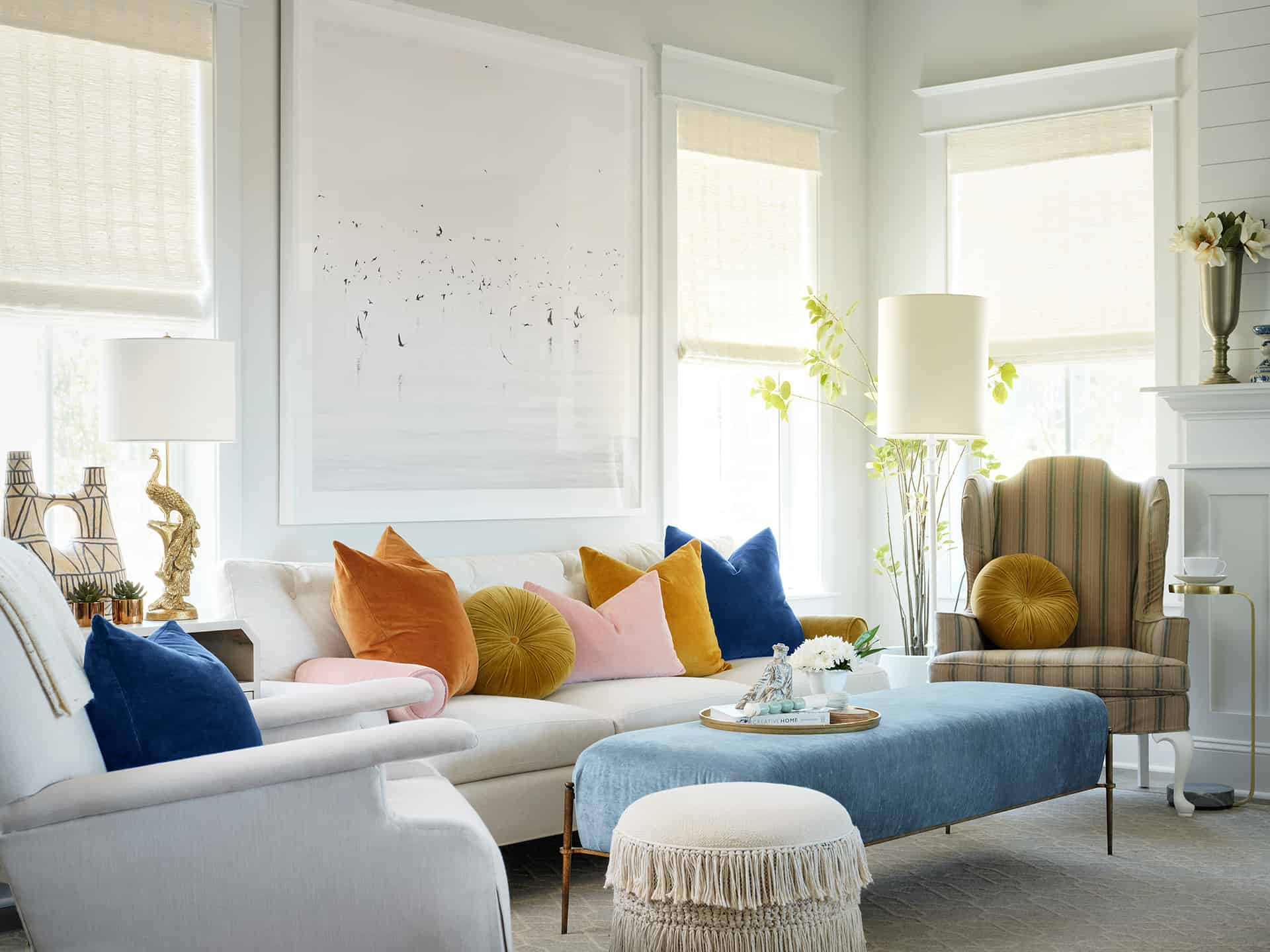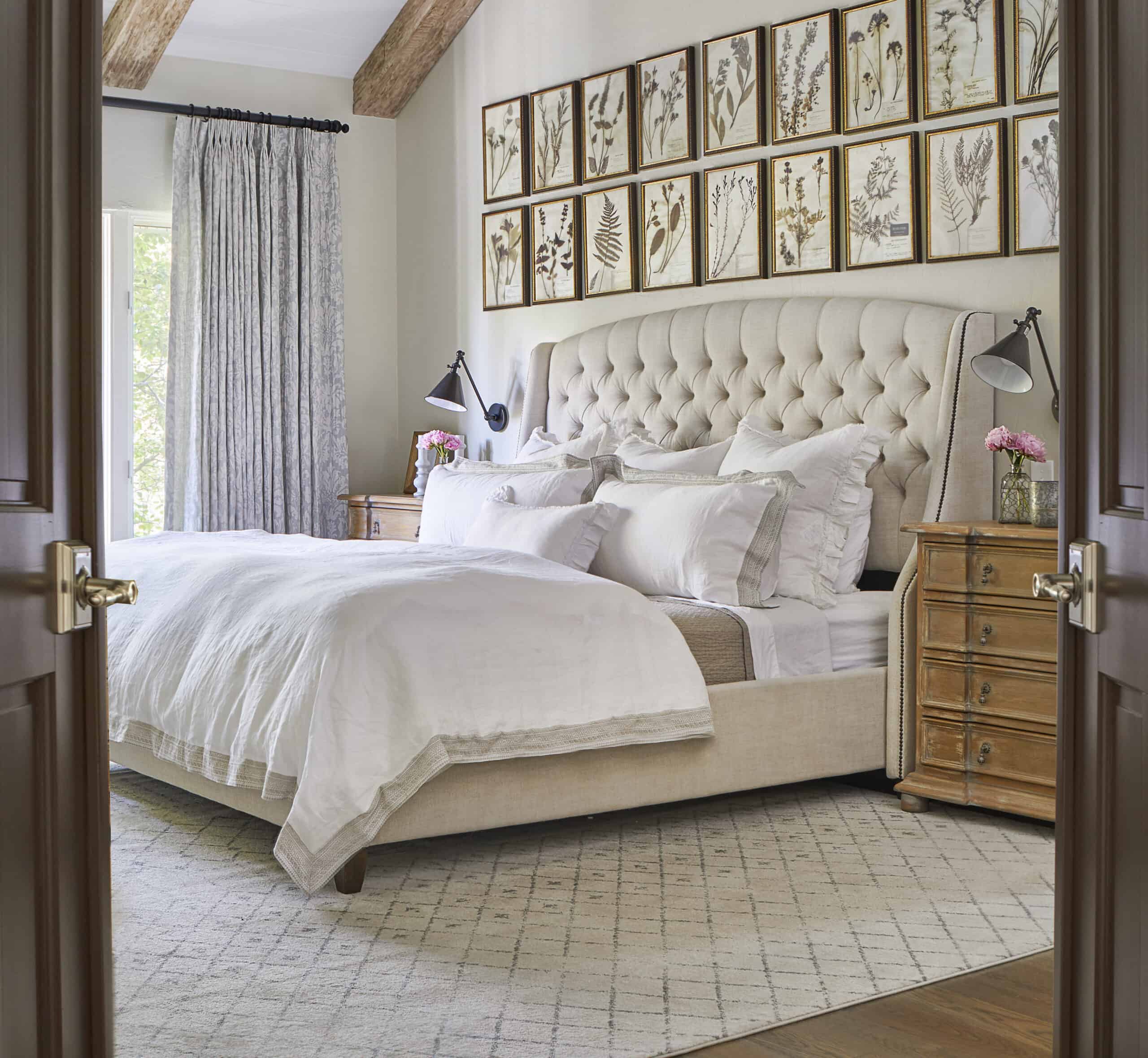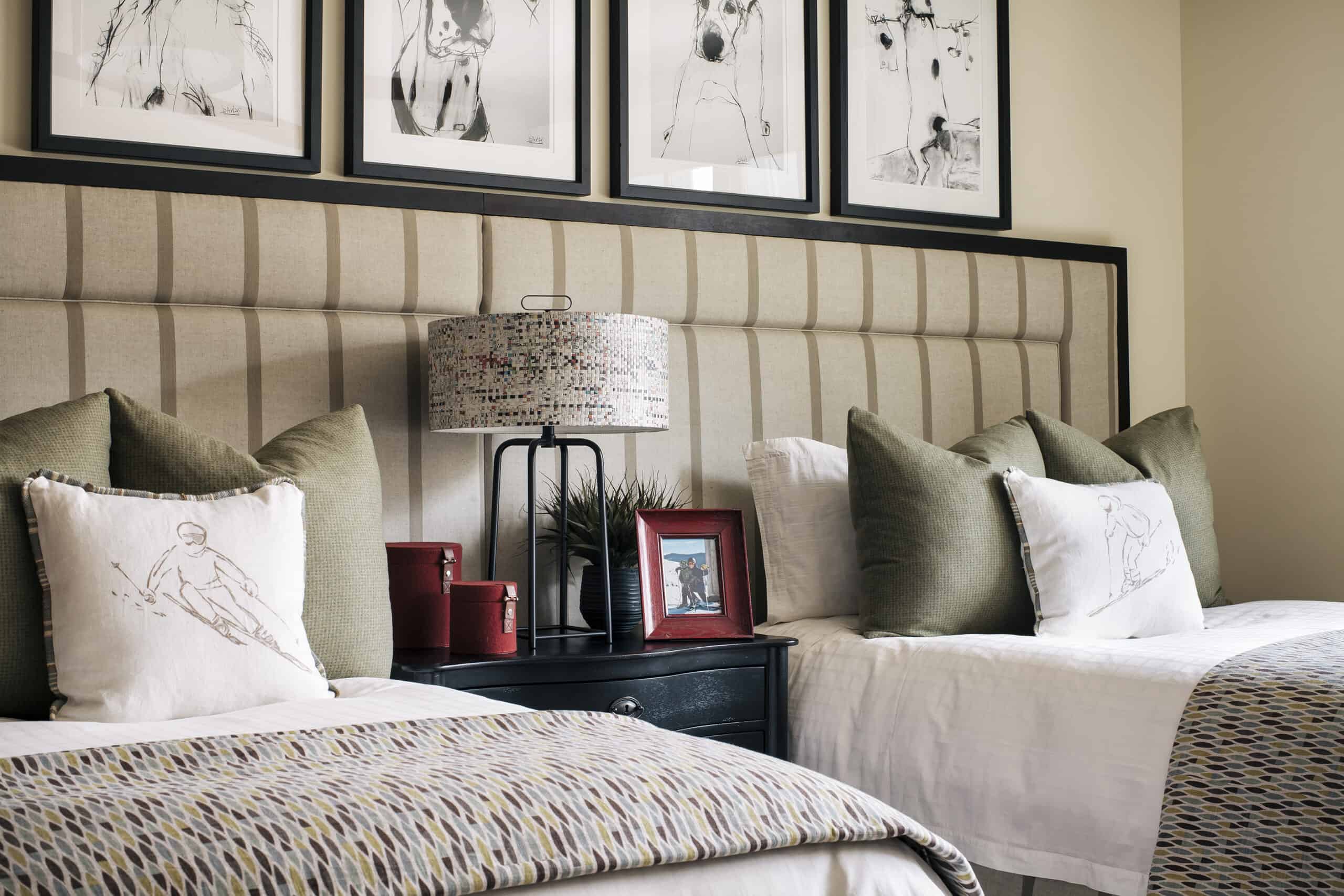Pillow Talk
It’s Not All Fluff
What is a contrast-welt versus a self-welt? How much is too much to spend on one? Do I prefer hard or soft inserts? Is there an appropriate size for one space versus another? Is there such a thing as too much pattern?
We are, of course, talking about decorative pillows. To the untrained eye, pillows are nothing more than a means to an end. This is likely the same group still sleeping on the pillows they used in their dorm rooms. No shame. But we are here to enlighten you. We sat down with one of Duet Design Group’s Interior Designers, Sarah Beth Shamblin, for some designer pillow talk. If you have ever wondered what a goose has to do with where you are laying your head, look no further.

Fill Me Up Buttercup
They say it’s what’s inside that counts. Whoever “they” are, they are not wrong. The fill is the component that will differentiate one pillow from the next.
Feather:
Pros: Feather fills have additional weight. This added firmness offers optimal support. It also boasts the most visual appeal.
Cons: This particular fill needs occasional fluffing to return to their original form. They are also known for having rogue feathers that try to escape and poke you in the process.
Down (goose or duck):
Pros: It is both notably soft and comfortable. Typically made with microfiber.
Cons: The more relaxed look has an innate tradeoff… this fill does not offer structural support. With that lack of support, they slouch which makes them less visually appealing.
Polyester:
Pros: They require less maintenance because they maintain their original form. They are great for clients who are allergic to feathers. They can also perform double duty as they can be a great option for exterior use with a waterproof pillow cover.
Con: Polyester fills tend to be stiffer and less comfortable.
*Note from the Designer: we do not specify sleeping pillows for clients. They are not used for decorative purposes and each client has vastly different sleeping preferences.

Size Matters
There is really no place a pillow cannot go. Bed, sofa, dining chairs, floor, you name it, a pillow has been there. This is not a one-size-fits-all item. We are very thoughtful about the sizing when considering the space where it will be living.
Sofa: We typically layer 20” square pillows in each corner or we will layer 22” squares with a 20” square in front.
Armchairs: These standards are not quite as consistent.
-We use seat width to determine our pillow width with the general rule being to go a couple of inches shorter.
-Next, we look at the chair’s height from seat height to back height to determine if we want more of a lumbar size (ex. 20”W x 10”H) or match the length to the height for a square pillow.
-Some clients have a preference on if they prefer a lumbar pillow in chairs for lower back support.

What’s that Accent?
We have the basic form down, so now for the fun. What is an outfit without accessories? Pillows have multiple options for finishing trims so let’s take a look at a few.
Trim is often added as a decorative element to enhance the color and texture of the main fabric.
Traditional and transitional homes often are the first to see this design element added, but with the vast array of trims in the marketplace these days, we are now seeing them span into modern and contemporary spaces as well.
Trims can include the following:
-Self-welts: using the same fabric as the pillow for the trim
-Contrast welt: using different fabric for the trim
-Tape: a decorative strip usually ranging from 1” – 4” that can be used around the edges or applied to the pillow face
-Tassels, Poms, Bullions: these are welts that hang off the pillow
-Flange: approximately 2-3”H stitch around the edge of the pillow
Typically, trims are applied around all four sides of the pillow but can also be limited to two edges.
Knife edge pillows do not have any kind of trimming around the edges.
We often specify “bottom zippers” so the pillow covers can be easily washed at the dry cleaner or in the washing machine.

In Perfect Form
We would not just give you the keys and not teach you how to drive. Next, we’ll talk about how we use pillows to complete the room.
-We tend to specify neutral sofas and like to bring colors/patterns into rooms with our decorative pillows. Pillows are an easy replacement for future designs when a client wants to change up their aesthetic.
-Pillows are a great place for pattern play within a room’s design as they bring interest into small areas without causing the space to feel overwhelming to clients.
-We find success with pillow formations when we layer pillows that each have varying textures/scale in patterns while maintaining the palette and story of the room.
While we have our suggestions, there is no perfect algorithm for pillows. Find what works best for you and have some fun with it. You can always change them later. Stick with whatever helps you sleep at night.